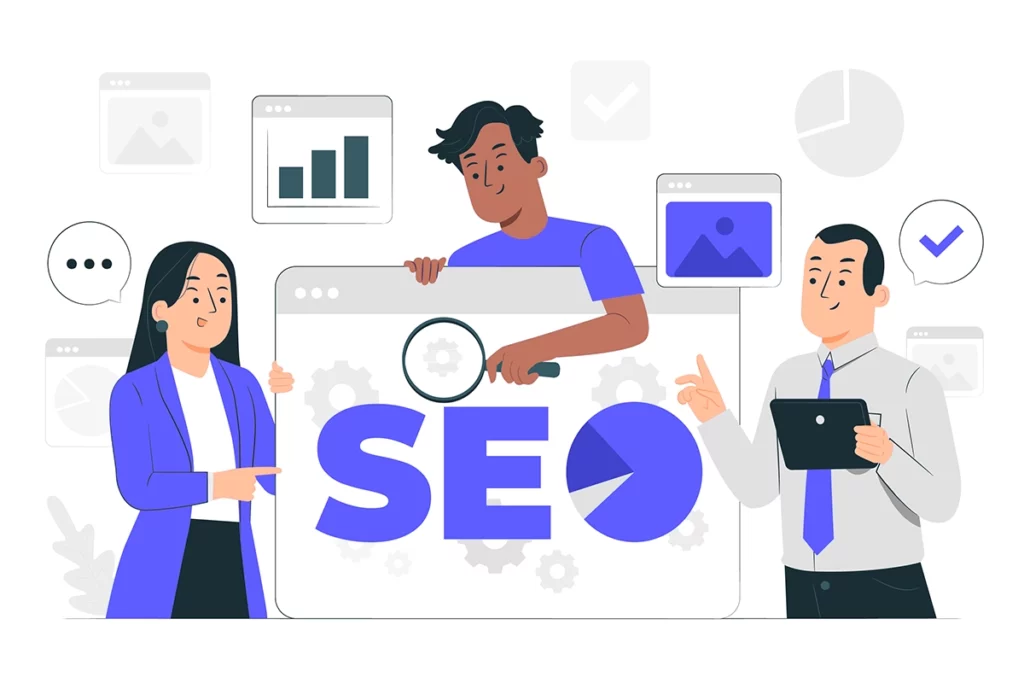Optimizing a website for Google requires a well-thought-out strategy and meticulous implementation. Here’s a detailed guide to help you optimize your site for search engine optimization.
A. Semantic Aspect:
1. Study Your Audience:
- Demographic Analysis: Identify the age, gender, location, and interests of your audience.
- Browsing Behavior: Use tools like Google Analytics to determine the most visited pages, time spent on each page, and bounce rate.
2. Write from H1 to H6:
- Importance of Hierarchy: Search engines use title tags to determine the structure of your content.
- Keywords in Titles: Incorporate your main keyword in the H1 and use variants or secondary keywords in subheadings.
3. Work on Writing Your Metadata:
- Title Tag: It should be concise (less than 60 characters) and include the main keyword.
- Meta Description: Write an enticing description of less than 160 characters that encourages clicks.
4. One Keyword per Page:
- Keyword Research: Use tools like Google Keyword Planner to identify terms searched by your audience.
- Content Optimization: Naturally integrate the keyword into the content, titles, metadata, and URLs.
5. Your Internal Links:
- Linking Structure: Create a logical internal linking structure that guides users through your site.
- Anchor Text: Use relevant anchor texts for your links, avoid generic terms like “click here.”
B. Technical Aspect:
1. CDN (Content Delivery Network):
- Benefits: A CDN stores copies of your site on multiple servers worldwide, thus reducing loading time.
- Selecting the Right CDN: Services like Cloudflare or Akamai can help improve your site’s speed and security.
2. Images in Webp and Resized:
- Conversion to Webp: This format offers comparable quality to JPEG with a reduced file size.
- Resizing Tools: Use tools like TinyPNG to resize your images without losing quality.
3. Video Compression in Webm:
- Benefits of Webm: Open format with efficient compression, ideal for the web.
- Video Hosting: Consider using platforms like YouTube or Vimeo to reduce the load on your server.
4. Metadata and Alt Attribute:
- Importance of the Alt Attribute: It describes the content of images, essential for accessibility and SEO.
- Metadata Optimization: Ensure each image has relevant metadata and descriptive file names.
5. Netlinking:
- Incoming Links: Get backlinks from quality sites relevant to your niche.
- Avoid Bad Links: Low-quality or spammy links can penalize your site.
6. Site Speed:
- Importance of Speed: Google considers loading speed as a crucial ranking factor.
- Testing Tools: Use Google PageSpeed Insights or GTmetrix to assess and improve your site’s speed.
- Server Optimization: Ensure you use quality hosting, consider using caching, and compress your CSS, JS, and HTML files.

